A new chapter in the history of evolution
Discovery of world’s oldest DNA breaks record by one million years
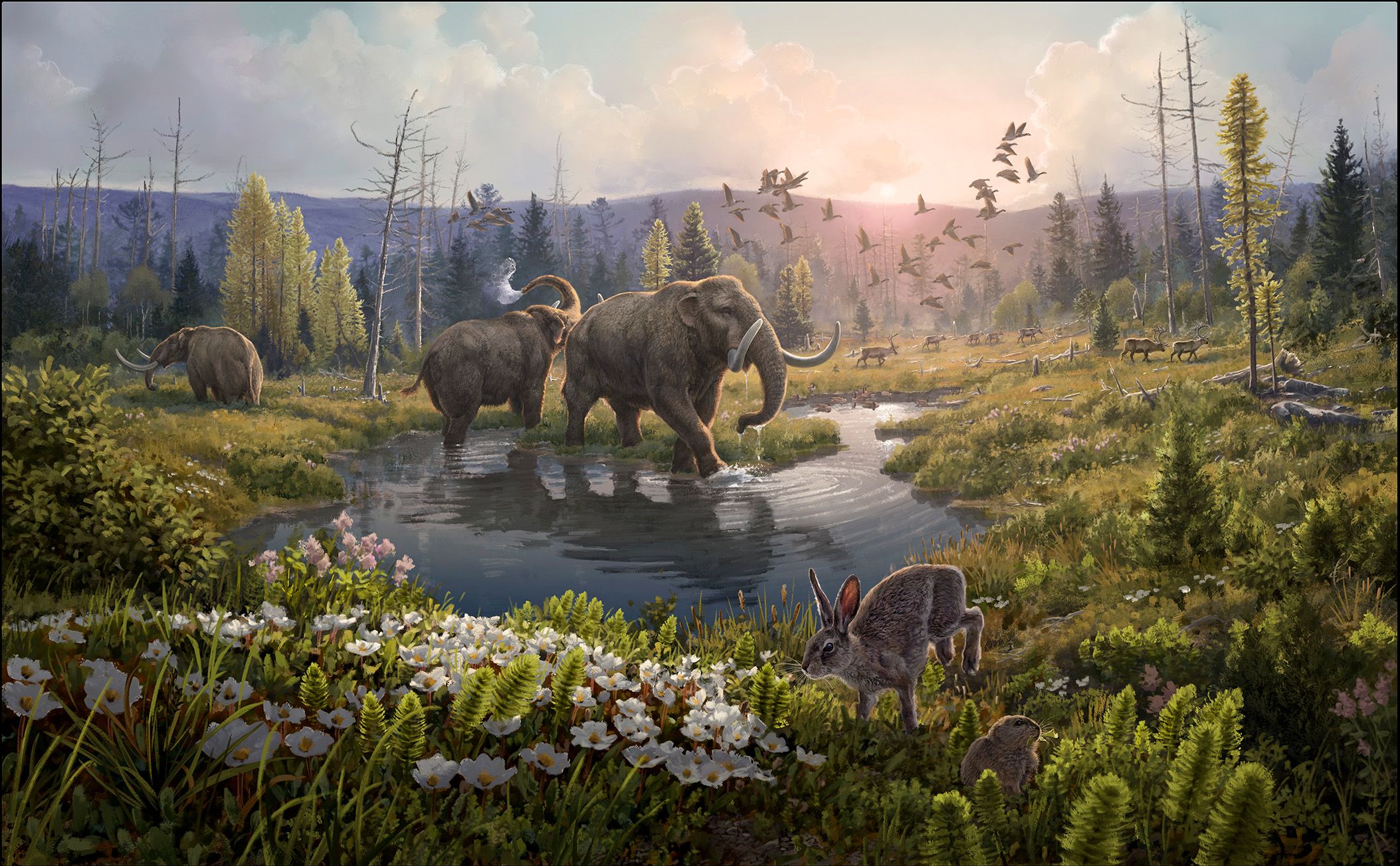
Two-million-year-old DNA has been identified for the first time opening a new chapter in the history of evolution.
Microscopic fragments of environmental DNA were found in Ice Age sediment in northern Greenland. The fragments are one million years older than the previous record for DNA sampled from a Siberian mammoth bone.
The ancient DNA has been used to map a two-million-year-old ecosystem which weathered extreme climate change. The results could help predict the long-term environmental toll of today’s global warming.
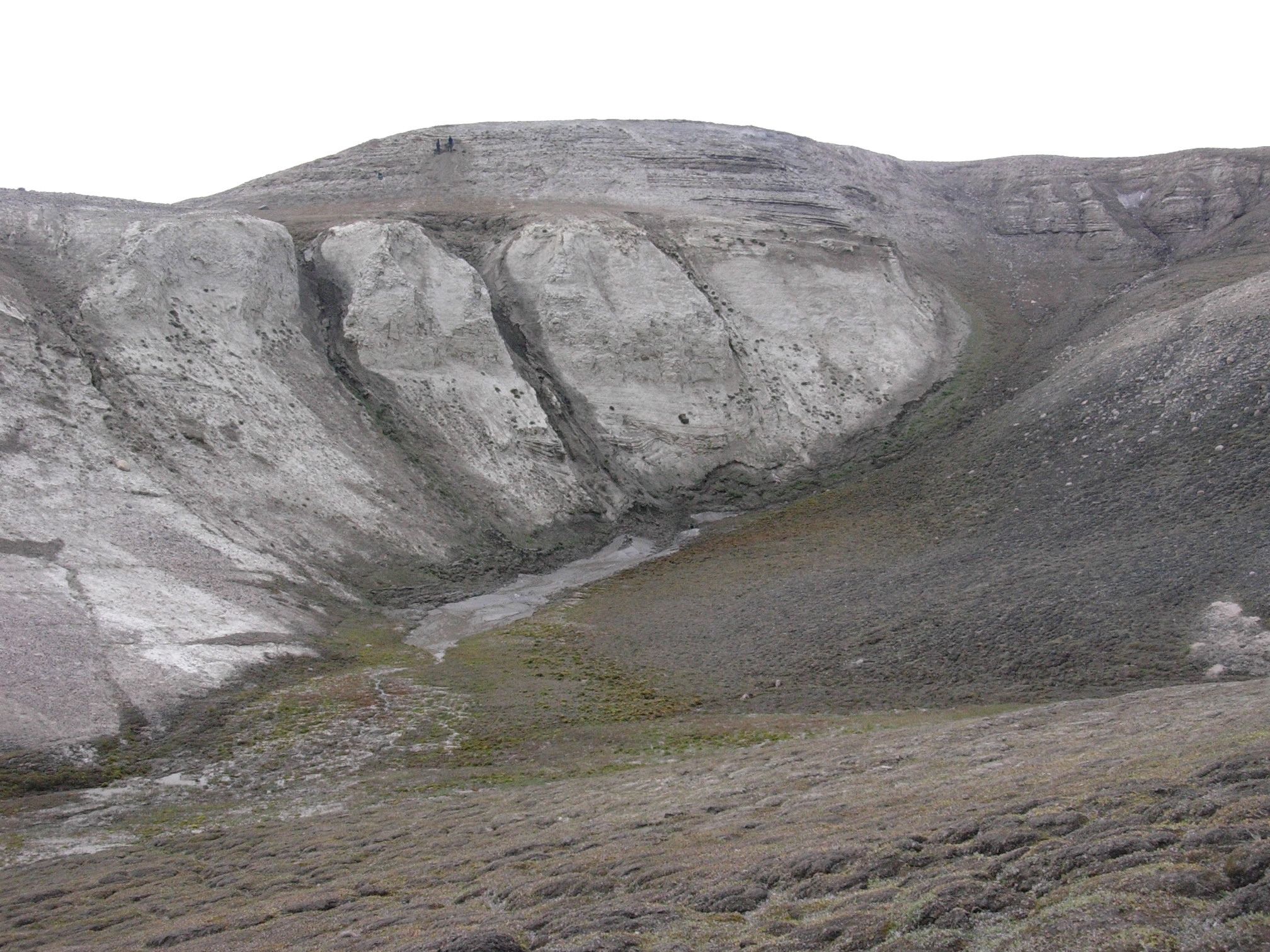
Main locality at the Kap København geological formation. At the bottom of the section the deep marine deposits are overlain by the coastal deposits of fine sandy material. The two people at the top are sampling for environmental DNA. Credit: Professor Svend Funder
Main locality at the Kap København geological formation. At the bottom of the section the deep marine deposits are overlain by the coastal deposits of fine sandy material. The two people at the top are sampling for environmental DNA. Credit: Professor Svend Funder
The discovery was made by a team of scientists led by Professor Eske Willerslev and Professor Kurt Kjær. Professor Willerslev is a Fellow of St John’s College, University of Cambridge and Director of the Lundbeck Foundation GeoGenetics Centre at the University of Copenhagen where Professor Kjær, a geology expert, is also based.
The results of the 41 usable samples found hidden in clay and quartz are published today in Nature.
“A new chapter spanning one million extra years of history has finally been opened and for the first time we can look directly at the DNA of a past ecosystem that far back in time,” says Willerslev.
“DNA can degrade quickly but we’ve shown that under the right circumstances, we can now go back further in time than anyone could have dared imagine.”
“The ancient DNA samples were found buried deep in sediment that had built-up over 20,000 years,” says Kjær. “The sediment was eventually preserved in ice or permafrost and, crucially, not disturbed by humans for two million years.”
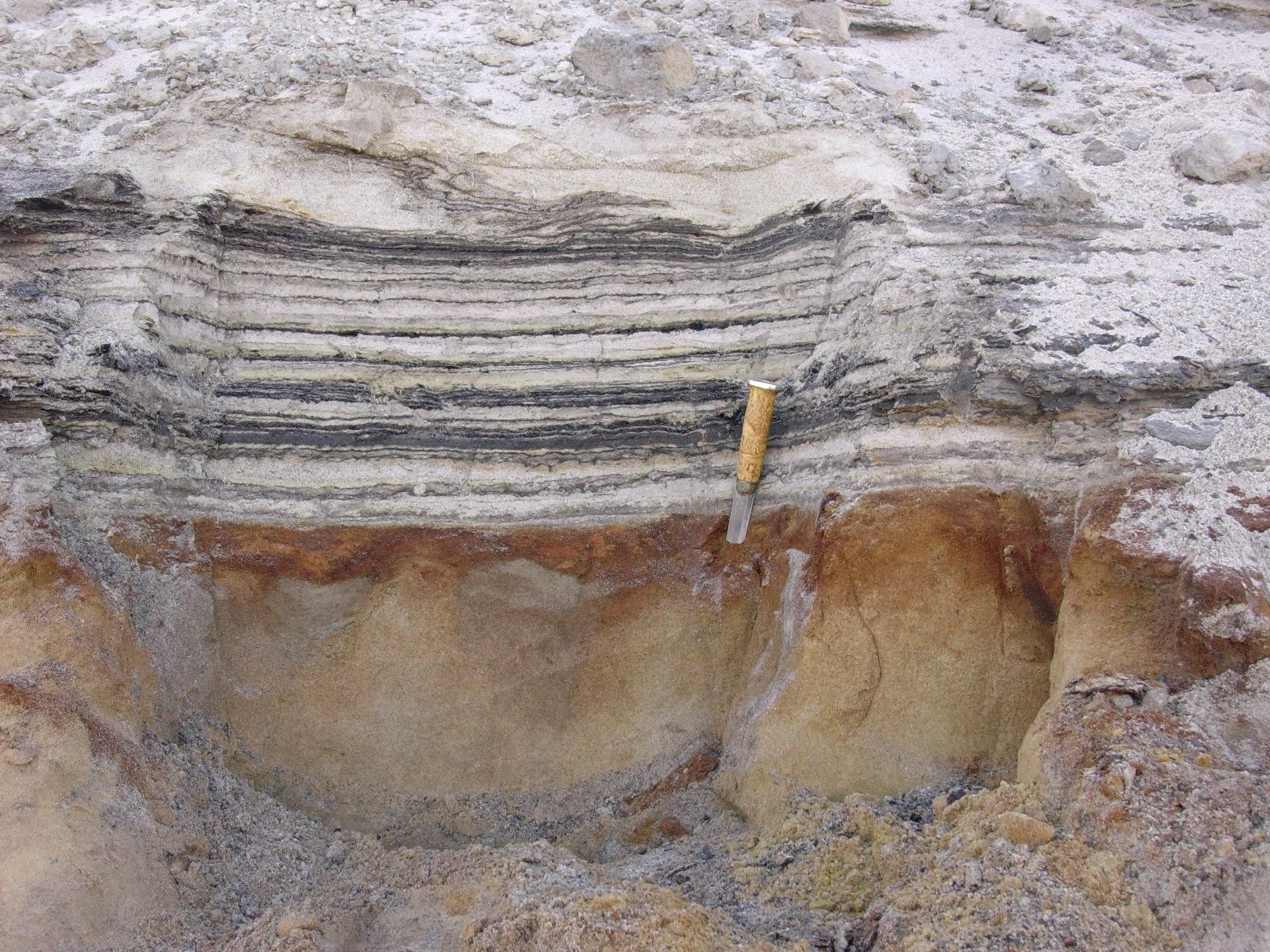
Close-up of organic material in the coastal deposits. The organic layers show traces of the rich plant flora and insect fauna that lived two million years ago at Kap København in North Greenland. Credit: Professor Svend Funder
Close-up of organic material in the coastal deposits. The organic layers show traces of the rich plant flora and insect fauna that lived two million years ago at Kap København in North Greenland. Credit: Professor Svend Funder
The incomplete samples, a few millionths of a millimetre long, were taken from the København Formation, a sediment deposit almost 100 metres thick tucked in the mouth of a fjord in the Arctic Ocean in Greenland’s northernmost point. The climate in Greenland at the time varied between Arctic and temperate and was between 10-17C warmer than Greenland is today. The sediment built up metre by metre in a shallow bay.
Evidence of animals, plants and microorganisms including reindeer, hares, lemmings, birch and poplar trees were discovered. Researchers even found that Mastodon, an Ice Age mammal, roamed as far as Greenland before later becoming extinct. Previously it was thought the range of the elephant-like animals did not extend as far as Greenland from its known origins of North and Central America.
Detective work by 40 researchers from Denmark, the UK, France, Sweden, Norway, the USA and Germany, unlocked the secrets of the fragments of DNA. The process was painstaking – first they needed to establish whether there was DNA hidden in the clay and quartz, and if there was, could they successfully detach the DNA from the sediment to examine it? The answer, eventually, was yes. The researchers compared every single DNA fragment with extensive libraries of DNA collected from present-day animals, plants and microorganisms. A picture began to emerge of the DNA from trees, bushes, birds, animals and microorganisms.
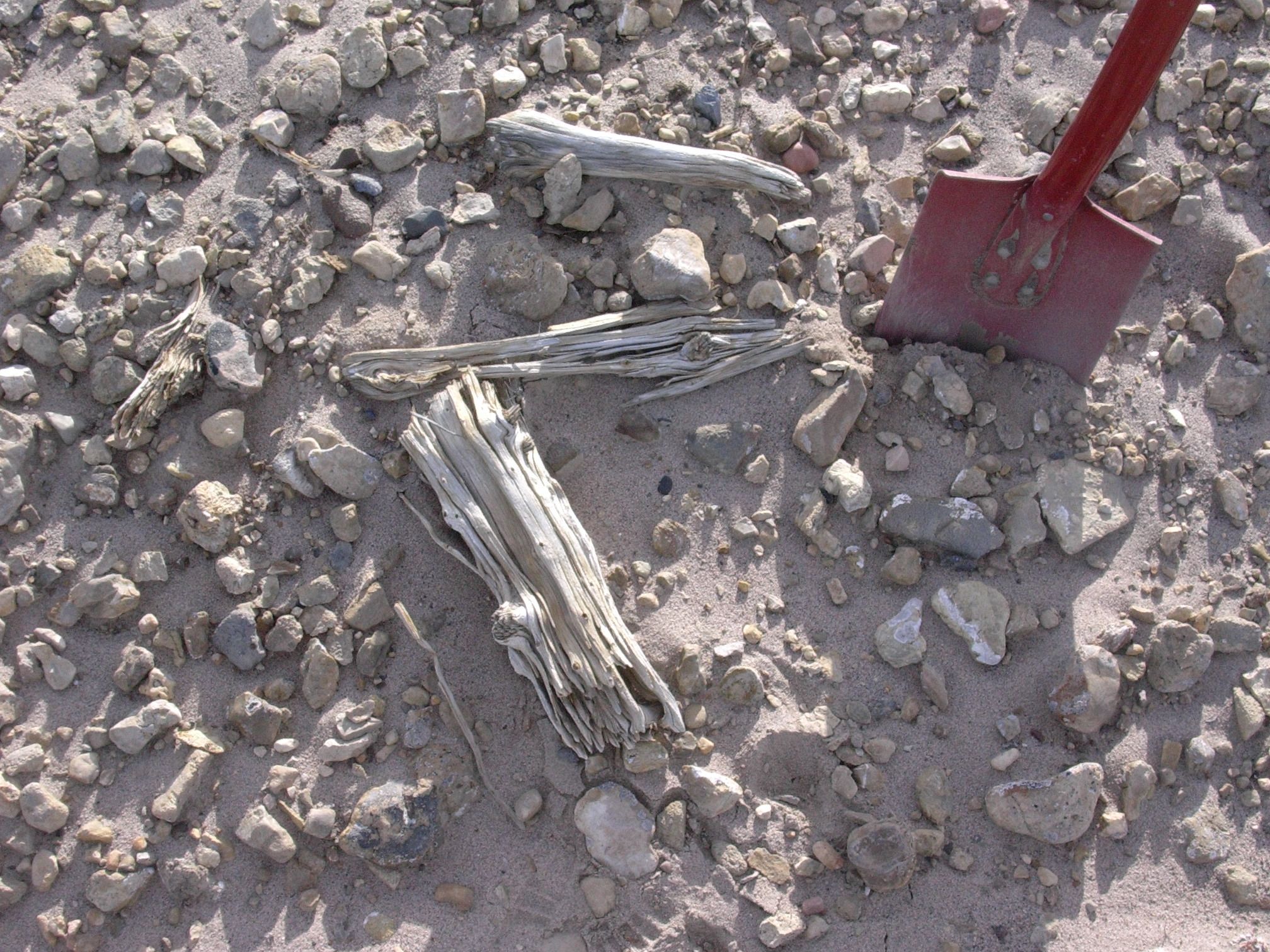
Remains of wooden branches from the forest that grew at Kap København two million years ago. Credit: Professor Svend Funder
Remains of wooden branches from the forest that grew at Kap København two million years ago. Credit: Professor Svend Funder
Some of the DNA fragments were easy to classify as predecessors to present-day species, others could only be linked at genus level, and some originated from species impossible to place in the DNA libraries of animals, plants and microorganisms still living in the 21st century.
The two-million-year-old samples also help academics build a picture of a previously unknown stage in the evolution of the DNA of a range of species still in existence today.
Researcher spotlight:
Bianca De Sanctis, PhD student, Department of Zoology, Cambridge University
"I first got involved in this study about two years ago, when Mikkel sent me a message on Slack asking me if I could do a computational analysis called molecular dating. Molecular dating lets you estimate the age of the sample based on the changes in the As, Cs, Ts and Gs themselves, compared to modern individuals of the same genus. Nobody had ever done this on environmental DNA before, and we weren't sure it would work – but I'd helped to develop some new techniques as part of my PhD and was keen to try, so I said yes.
"Mikkel told me they thought the environmental DNA was 2 million years old, and that was the first awesome moment. But the better moment came a few days later when he sent me the data. Ancient environmental DNA data is usually low coverage, which means there's not a lot to work with, and I assumed that this would be some of the worst data I've seen because it was so old. But somehow, there was more than enough for this analysis to work and confirm their geological date. They must have spent a lot of effort on sequencing.
"For me, the coolest part of this study is not necessarily the findings themselves, but the implications for future work. We can now understand past ecosystems in an entirely new and comprehensive way. We didn't do this here, but there's no reason this can't be done as a time series, so that you could track the evolution of ecosystems over time and how they respond to big environmental events. If we use it correctly, ancient environmental DNA could have an important role in addressing the climate and biodiversity crisis."
“The Kap København ecosystem, which has no present-day equivalent, existed at considerably higher temperatures than we have today – and because, on the face of it, the climate seems to have been similar to the climate we expect on our planet in the future due to global warming,” says co-first author Assistant Professor Mikkel Pedersen of the Lundbeck Foundation GeoGenetics Centre.
“One of the key factors here is to what degree species will be able to adapt to the change in conditions arising from a significant increase in temperature. The data suggests that more species can evolve and adapt to wildly varying temperatures than previously thought. But, crucially, these results show they need time to do this. The speed of today’s global warming means organisms and species do not have that time so the climate emergency remains a huge threat to biodiversity and the world – extinction is on the horizon for some species including plants and trees.”
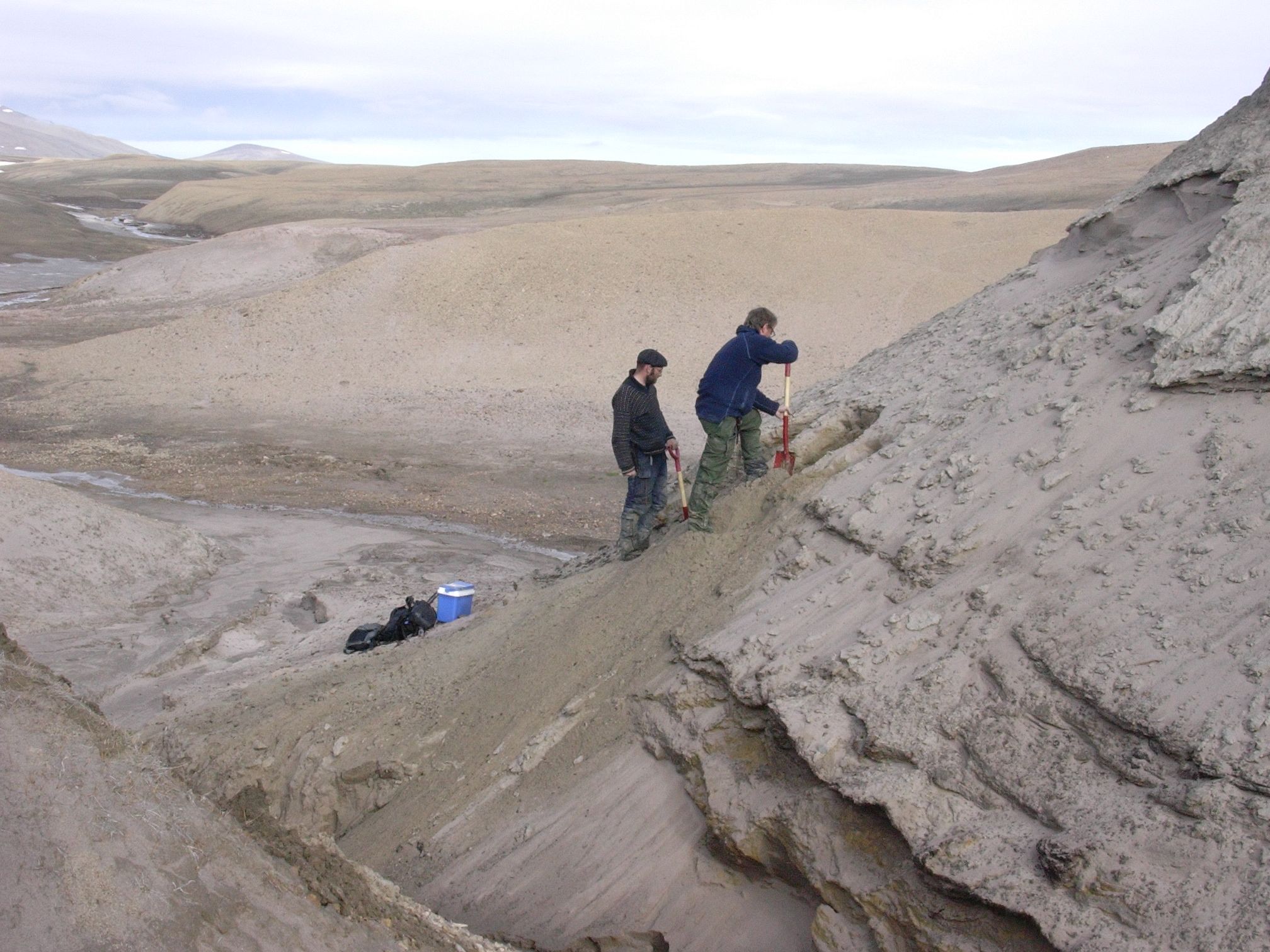
Professors Eske Willerslev and Kurt Kjær exposing fresh layers for sampling of sediments. Credit: Professor Svend Funder
Professors Eske Willerslev and Kurt Kjær exposing fresh layers for sampling of sediments. Credit: Professor Svend Funder
While reviewing the ancient DNA from the Kap København Formation, the researchers also found DNA from a wide range of microorganisms, including bacteria and fungi, which they are continuing to map. A detailed description of how the interaction – between animals, plants and single-cell organisms – within the former ecosystem at Greenland’s northernmost point worked biologically will be presented in a future research paper.
It is now hoped that some of the ‘tricks’ of the two-million-year-old plant DNA discovered may be used to help make some endangered species more resistant to a warming climate.
“It is possible that genetic engineering could mimic the strategy developed by plants and trees two million years ago to survive in a climate characterised by rising temperatures and prevent the extinction of some species, plants and trees,” says Kjær. “This is one of the reasons this scientific advance is so significant because it could reveal how to attempt to counteract the devastating impact of global warming.”
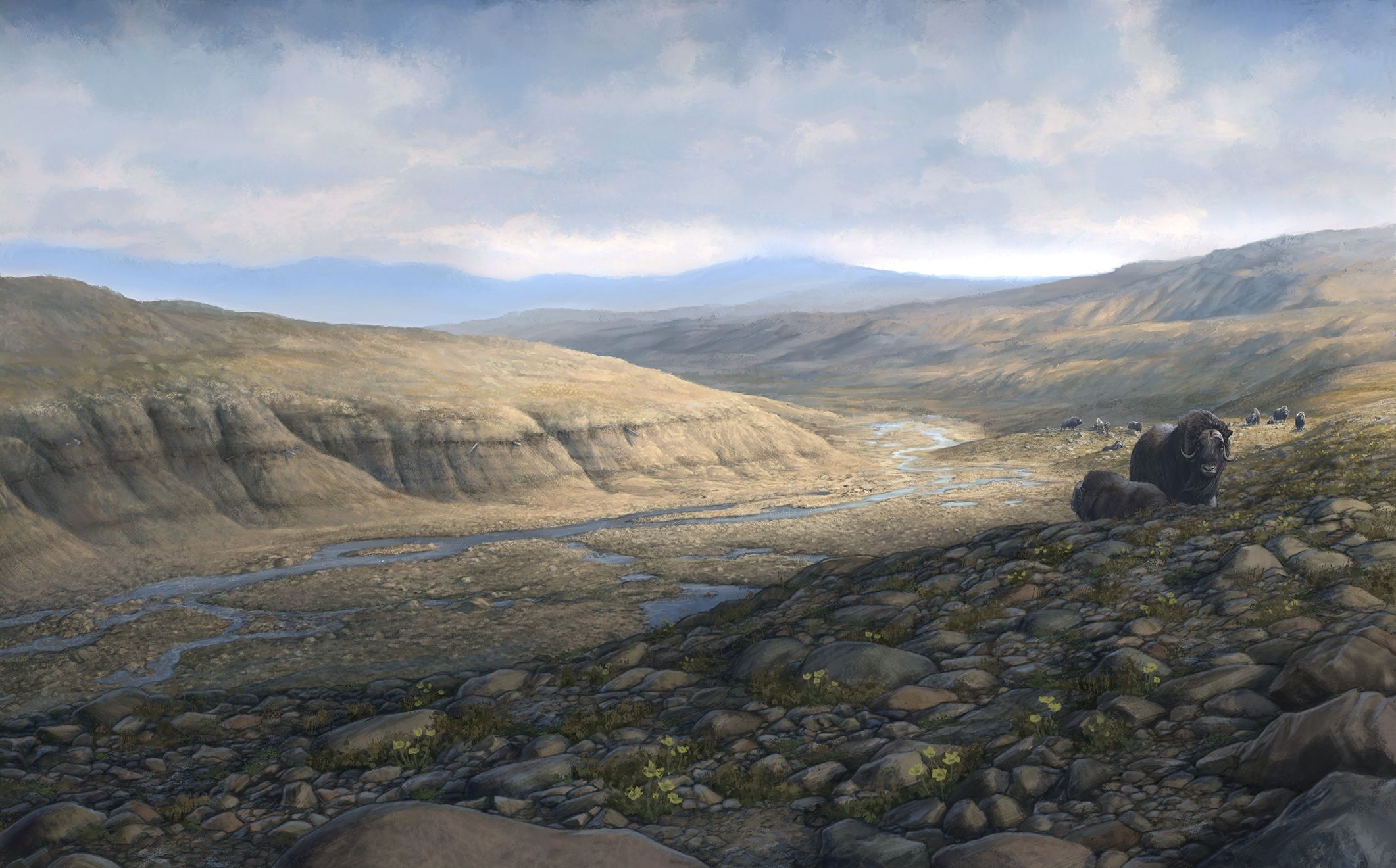
An artist’s reconstruction of the landscape surrounding the Kap København formation today. This arctic desert is one of the coldest and driest environments, which is reflected in the low biodiversity and production. Artist: Beth Zaiken/bethzaiken.com
An artist’s reconstruction of the landscape surrounding the Kap København formation today. This arctic desert is one of the coldest and driest environments, which is reflected in the low biodiversity and production. Artist: Beth Zaiken/bethzaiken.com
The findings from the Kap København Formation in Greenland have opened up a whole new period in DNA detection.
“DNA generally survives best in cold, dry conditions such as those that prevailed during most of the period since the material was deposited at Kap København,” says Willerslev. “Now that we have successfully extracted ancient DNA from clay and quartz, it may be possible that clay may have preserved ancient DNA in warm, humid environments in sites found in Africa.
“If we can begin to explore ancient DNA in clay grains from Africa, we may be able to gather ground-breaking information about the origin of many different species – perhaps even new knowledge about the first humans and their ancestors – the possibilities are endless.”
Published 7 December 2022
With thanks to:
Bianca De Sanctis
Kurt Kjær
Mikkel Pedersen
Eske Willerslev
Words:
Jo Tynan
Photography:
Svend Funder
Art:
Beth Zaiken
The text in this work is licensed under a Creative Commons Attribution 4.0 International License
